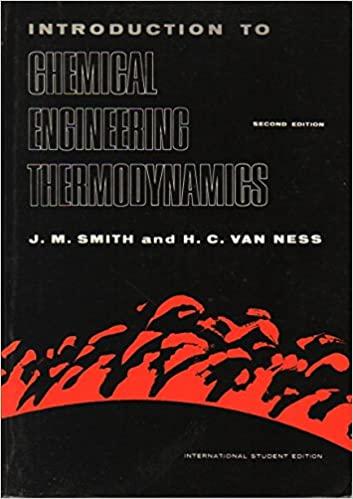Answered step by step
Verified Expert Solution
Question
1 Approved Answer
Consider a gaseous mixture of A and B in a gas scrubbing tower. The mixture contains Component A at a mole fraction of 0.15 .
 Consider a gaseous mixture of A and B in a gas scrubbing tower. The mixture contains Component A at a mole fraction of 0.15 . Component A will diffuse from the mixture through a thin layer of argon gas (thickness is Lmm ), where it will then enter an absorbing liquid phase. The mole fraction of A in the argon at the surface of the liquid is 0.28 . Component B is present in the liquid phase and can move the opposite direction (from the liquid, through the argon, and back into the gas phase in tower). (a) Consider two cases: Case 1: only Component A transfers from the holding tank to the liquid phase (one way mass transfer). Case 2: both Component A and Component B transfer under the conditions of equimolar counter diffusion. In which case is the molar flux of A is larger and by how much? (Don't get caught off guard by "equimolar counter diffusion", you should consider total molar flux for both cases.) (b) What is the value of the mole fraction of component A halfway through the layer for the case of one way diffusion
Consider a gaseous mixture of A and B in a gas scrubbing tower. The mixture contains Component A at a mole fraction of 0.15 . Component A will diffuse from the mixture through a thin layer of argon gas (thickness is Lmm ), where it will then enter an absorbing liquid phase. The mole fraction of A in the argon at the surface of the liquid is 0.28 . Component B is present in the liquid phase and can move the opposite direction (from the liquid, through the argon, and back into the gas phase in tower). (a) Consider two cases: Case 1: only Component A transfers from the holding tank to the liquid phase (one way mass transfer). Case 2: both Component A and Component B transfer under the conditions of equimolar counter diffusion. In which case is the molar flux of A is larger and by how much? (Don't get caught off guard by "equimolar counter diffusion", you should consider total molar flux for both cases.) (b) What is the value of the mole fraction of component A halfway through the layer for the case of one way diffusion Step by Step Solution
There are 3 Steps involved in it
Step: 1

Get Instant Access to Expert-Tailored Solutions
See step-by-step solutions with expert insights and AI powered tools for academic success
Step: 2

Step: 3

Ace Your Homework with AI
Get the answers you need in no time with our AI-driven, step-by-step assistance
Get Started


